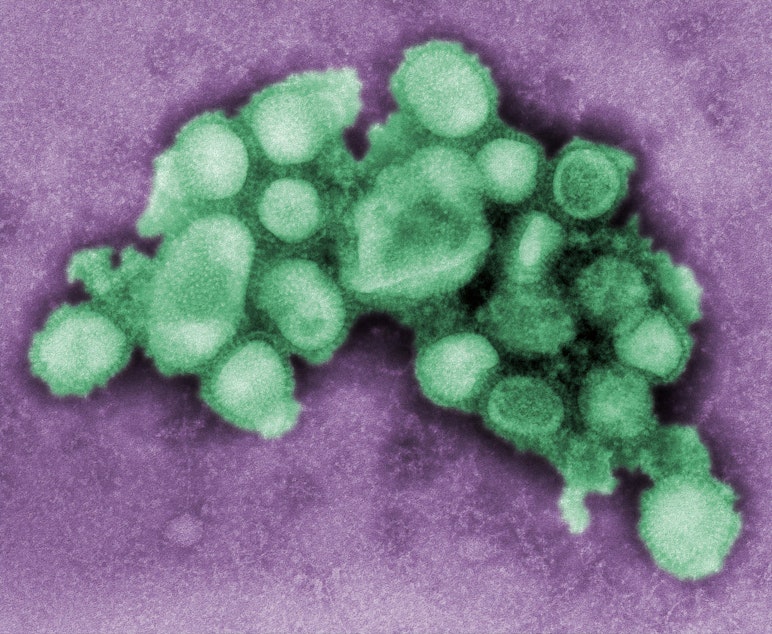Pandemic side effect: Zero flu deaths in Washington state

Last year, as coronavirus took hold in the U.S., public health officials also warned people about the flu, which kills tens of thousands of people every year in the U.S. The concern was that coronavirus and the flu could spread through the population at the same time, and potentially overload healthcare systems.
But a flu season never emerged over the past year. Dr. Helen Chu, directs the Seattle Flu Study, explained why while talking with KUOW's Kim Malcolm.
Last flu season, 114 people died from influenza in Washington state. This year, that number is zero.
Dr. Helen Chu: We have seen almost no flu in the United States as a whole, and certainly none in Washington state. It has been quite remarkable.
Does this surprise you?
Dr. Chu: Yes. Definitely, it is surprising. I think we all believe that with all the measures we put in place — the masking, the distancing, the school and workplace closures, the travel lockdowns — all of those things would decrease the presence of other viruses, including flu, but also RSV and Parainfluenza, and all of the other viruses that cause cold-like symptoms. But, to see it eliminated to essentially zero was something that none of us expected.
Sponsored
Are all the precautions we're taking for coronavirus alone able to explain all that?
Dr. Chu: It seems to be true, that that is what's happening, because if you think about it, what else has changed? Everything that we have done in the last year in terms of the changes in our behavior, and the changes in movement, are as a result of the coronavirus pandemic. The fact that we are now at zero, when we were before at much higher numbers, has to do with that.
Is this something that you would want to pursue, to find out more about?
Dr. Chu: Certainly, all of us are wondering what kinds of measures should we have all the time? Out of the things that have been done — the masking, the distancing, the closures, and the travel restrictions — which one of those four has the largest effect on suppressing the other viruses, especially flu, but the other viruses as well?
There are a couple of ways to look at that. You can look at it using modeling approaches. You can also look at different parts of the world where certain things were done, and certain things were not done, like school closures in some places, and no school closures and other places.
Sponsored
You can also look at the places where there was an initial lockdown with total suppression of cases, like Australia and New Zealand, and then see what's reemerging as things are relaxing. For example, in Australia, they're starting to see more cases now of other respiratory viruses. I think it's from that kind of observation that you can make some conclusions about which pieces play the most important part in suppressing flu.
I'm curious, does this mean it's going to be more difficult to predict strains of flu as people develop next year's flu vaccine?
Dr. Chu: Yes. It is going to be much more difficult to develop next year's flu vaccine. The way that flu vaccine strain selection works, how we pick the pieces that go into the flu vaccine, is that we look at what's been circulating around the world. Then the World Health Organization meets twice a year and they look at what's been circulating, and then they make a decision.
But this year, nothing has been circulating. So it's going to be much harder to predict. The good news is that there are four pieces of the flu vaccine because most people get what's called a Quadrivalent Vaccine and that three of those four actually don't change very much from year to year. So those three will not be hard to predict. They'll just stay the same. It's really the fourth piece that's the wild card.
Listen to the interview by clicking the play button above.
This interview has been edited for clarity.


